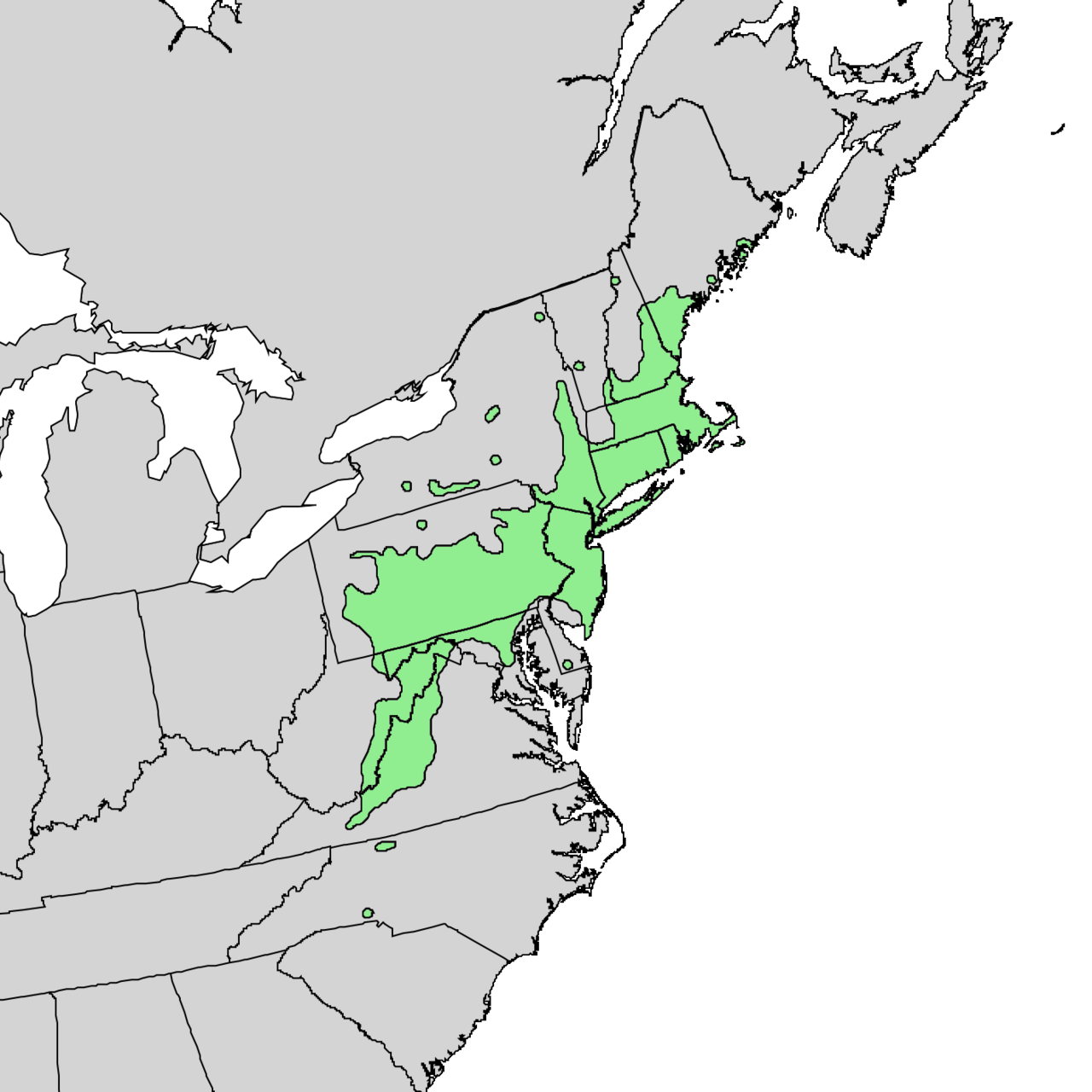Bear Oak
Quercus ilicifolia Wangenh.
Description
Bear oak, also called scrub oak, is a member of the beech family (Fagaceae). It is a small shrub or small tree and typically has a height ranging from 12-20 feet and trunk not more than 5 inches in diameter. The bark is usually dark gray. Their stems die out quickly Bear oak stems have a life span of 20-30 years ¹, and grow at a very slow rate ³. The root system may survive longer and regenerate new plants ³. Bear oak has a very large, shallow root system 1,3. The leaves are simple, alternate and measure from 2 to 3 inches long 1,2 to 4 inches wide. Leaves are shallowly 3 to 7 lobed and bristle tipped 1,2. Leaves usually have a glossy green coat but in the fall turn orange to red. The underside of the leaf is covered with silver hairs ¹. Bear oak is monoecious, having both male and females flowers on the same plant. The acorns of this tree are shaped like an egg and measure from 0.4 to 0.8 inches long. Like all members of the “black oak” group, two growing seasons are required before dispersal.
Bear oak leaves. International Oak Society ¹.

Bear oak acorns. International Oak Society ¹.
Distribution
Bear oaks are distributed through the northeastern United States and Southern Ontario. The most northern point the bear oak will appear is in Ontario and the most southern point the bear oak will appear is North Carolina ³. Naturally the bear oak is found in areas frequented by wildfire and is especially common in the New Jersey Pine Barrens ³. Bear oaks are extremely shade intolerant ³, so they are often out-competed for space after a disturbance 1,3. Bear oaks tend to be in lowlands to upland slopes, but it does not grow at very high elevations 6. They prefer acidic nutrient-poor soil which include sandy and gravel like soil, so it is slow growing and dies out quickly1,2. Bear oak’s preferred habitat is in rocky ridges, barrens, and sandy mountain-like terrain 2. It can be found primarily in the western Maryland in shale barrens 4.

Native range of bear oak. USGS 6.
Wildlife Importance
The acorns of these trees are the reason it is named bear oak since the acorns are so bitter they are speculated eaten only eaten by bears. The acorns has many important nutrients that prove to be a parts of diets for many bears, deer, wild turkey and flying squirrels 1,5. Bear oak’s allow nesting, space, cover and shelter for many insects including butterfly and caterpillar species like the Sleepy Duskywing (Erynnis brizo) and the Eastern Buckmoth (Hemileuca maia). This tree is host to many insects consumed by birds 5.
Economic Importance
There is little available information on the historical, medicinal or ethnological uses of bear oak ³.
Threats
Quercus iicifolia are very resistant to various climate variations such as a lacking of water a severe rise or lowering in temperature. Resprouuting from roots allows for recovery following from fire 1,2. These trees also attract insects like bark beetles, various caterpillars such as the Sleepy Duskywing (Erynnis brizo) and Eastern Buckmoth (Hemileuca maia) and many other invasive insect herbivores that cause tree mortality and reduce the production of acorns and when isolated from these insects they have much longer life expectancies.
Interesting Facts
- Quercus ilicifolia are an very good source of personal shade in a homeowner’s yard or just in natural area or park in a neighborhood 5.
- Iroquois clan used the Bear Oak’s acorns to lighten the effect of menstrual cramps ¹.
- The Physiographic Region or the region where this tree is most closely studied with respect to the geography and patterns of the area is New Jersey 5..
- Bear Oak’s produce tannis which is extracted from the bark for dying and tanning hides 4.
- The leaves, flowers, and bark from this tree were used for medicinal purposes including relieving fevers, vomiting, and diarrhea and this practice originated in Europe and North America 4.
References
- International Oak Society. Species Spotlight: Quercus ilicifolia Wangenh.
- Lady Bird Johnson Wildlife Center: Quercus ilicifolia
- USDA-Forest Service, Fire Effects Information System: Quercus ilicifolia
- Maryland Biodiversity Project: Quercus ilicifolia
- Jersey-Friendly Yards; Quercus ilicifolia
- Wickimedia: Quercus ilicifolia range map

